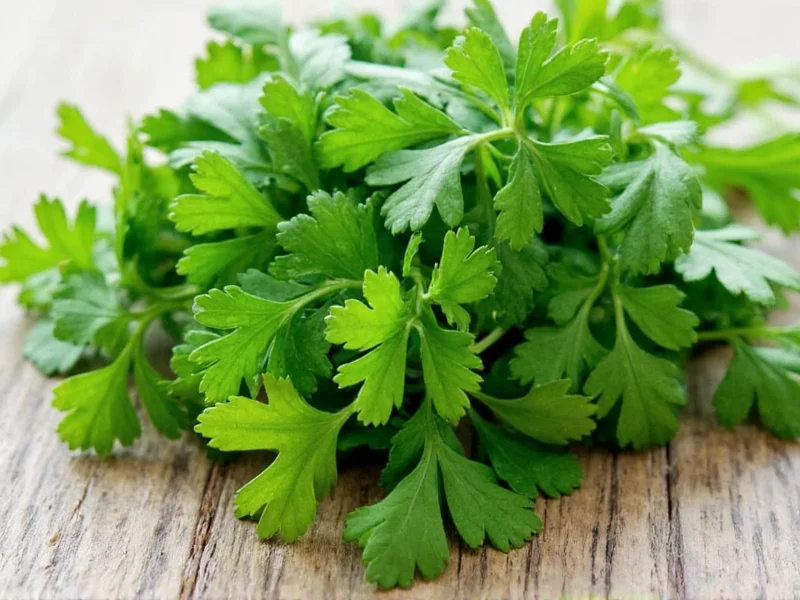When you're preparing a recipe that calls for parsley but find your container empty, knowing reliable herb alternatives prevents cooking disruptions. Understanding what herb can replace parsley effectively depends on the dish you're preparing and the flavor profile you want to maintain. This guide explores practical substitutions backed by culinary expertise, ensuring your dishes maintain their intended character even when parsley isn't available.
Understanding Parsley's Culinary Role
Parsley serves multiple functions in cooking beyond mere garnish. Flat-leaf (Italian) parsley provides a clean, slightly peppery freshness that brightens rich dishes without overpowering other ingredients. Curly parsley offers similar properties with a milder flavor profile. When seeking what herb can replace parsley, consider whether you need its visual appeal, fresh flavor component, or textural element in your dish.
Top Parsley Substitutes Compared
Not all parsley alternatives work equally well across different recipes. The ideal substitute depends on your specific culinary application. Below is a comparison of the most effective herb alternatives to parsley:
| Substitute Herb | Flavor Profile | Best Used In | Substitution Ratio |
|---|---|---|---|
| Cilantro | Bright, citrusy, slightly peppery | Salsas, guacamole, Asian stir-fries, tabbouleh | 1:1 fresh, but use 25% less if sensitive to strong flavors |
| Dill | Grassy, slightly sweet with anise notes | Fish dishes, potato salad, tzatziki, egg salads | 1:1 fresh, but works better in creamy preparations |
| Chervil | Mild anise, delicate parsley-like flavor | French cuisine, omelets, fines herbes blends | 1:1 fresh (closest flavor match) |
| Celery Leaves | Earthy, mild celery flavor | Stocks, soups, stews, casseroles | 1.5:1 (use 50% more than parsley) |
| Basil | Sweet, peppery with clove notes | Tomato-based dishes, pesto, Italian cuisine | Use sparingly (1:2 ratio) to avoid flavor dominance |
Cilantro: The Vibrant Alternative
When exploring what herb can replace parsley in Mediterranean or Latin American dishes, cilantro emerges as the most versatile substitute. Its bright, citrusy notes work particularly well in tabbouleh, salsa verde, and chimichurri where parsley would normally feature. However, cilantro's distinctive flavor can dominate delicate dishes, so consider using 25% less than the recipe specifies for parsley. Those with the genetic trait that perceives cilantro as soapy should avoid this substitute entirely.
Dill: The Fresh Contender
Dill makes an excellent parsley replacement when what herb can replace parsley in seafood preparations or creamy salads. Its feathery texture resembles parsley visually, while its subtle anise notes complement rather than overpower. In potato salad or fish dishes, dill works at a 1:1 substitution ratio. For best results, add dill toward the end of cooking as prolonged heat diminishes its delicate flavor. Dried dill proves less effective as a parsley substitute than fresh, losing much of its characteristic brightness.
Chervil: The Professional's Choice
Chefs often reach for chervil when determining what herb can replace parsley in refined French cuisine. With its mild anise undertones and similar appearance to flat-leaf parsley, chervil provides the closest flavor match among herb alternatives. It shines in omelets, delicate sauces, and the classic fines herbes blend. When substituting chervil for parsley, maintain a 1:1 ratio for fresh applications. Note that chervil wilts quickly, so add it in the final minutes of cooking to preserve both flavor and visual appeal.
Celery Leaves: The Pantry Savior
Often overlooked, celery leaves serve as an excellent parsley substitute when what herb can replace parsley in soups, stocks, and braises. Their earthy flavor complements rather than competes with other ingredients. Use 50% more celery leaves than the parsley amount specified, as their flavor is milder. The leaves work particularly well in mirepoix or bouquet garni preparations. For garnish purposes, finely chop the lighter green leaves to approximate parsley's appearance.
Dried Herb Substitutions
When fresh herbs aren't available, understanding how to substitute dried parsley with other herbs becomes essential. Dried herbs generally require different ratios than fresh due to concentrated flavors. For most recipes calling for fresh parsley, use one-third the amount of dried herb. Dried chervil makes the closest match, while dried cilantro works surprisingly well in spice rubs and dry marinades despite its unusual appearance. Avoid using dried basil or dill as parsley substitutes in most applications, as their stronger flavors can overwhelm dishes.
Specialized Substitution Guidelines
Certain dishes demand specific considerations when selecting what herb can replace parsley. In tabbouleh, where parsley constitutes up to 80% of the dish, cilantro serves as the only viable substitute, though it transforms the dish's character. For garnishing steak or roasted meats, chives provide visual appeal with a mild onion flavor that complements without distracting. In Middle Eastern dishes like kibbeh, mint offers a traditional alternative that maintains cultural authenticity when parsley is unavailable.
Creating Your Own Herb Blends
When no single herb adequately replaces parsley, consider blending alternatives to approximate its balanced profile. Combine equal parts dried chervil and dried celery seed for dry applications, or mix fresh dill with a small amount of tarragon for fresh preparations. For Mediterranean dishes, a blend of cilantro and mint (3:1 ratio) mimics parsley's freshness while adding complexity. These custom blends work particularly well when what herb can replace parsley in substantial quantities across multiple dishes.











 浙公网安备
33010002000092号
浙公网安备
33010002000092号 浙B2-20120091-4
浙B2-20120091-4